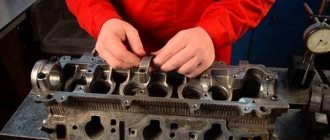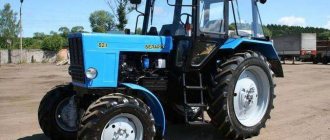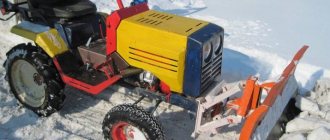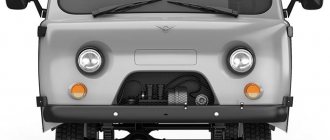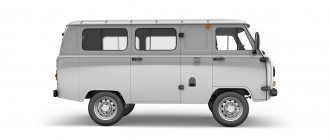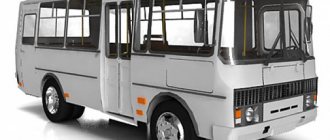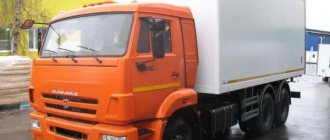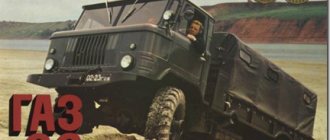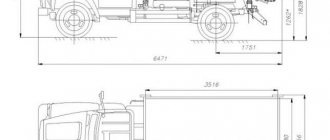Probably almost every motorist has heard about the 130th ZIL at least once in his life. Of course, this is a legendary car that left a big imprint on the history of the USSR automotive industry. But no less legendary is the motor itself from this device. Let's consider the main technical characteristics, device, as well as the complete process of maintenance and overhaul of this power unit.
TECHNICAL SPECIFICATIONS OF ENGINE
Basic data ZIL-130
Number of cylinders 8
Cylinder arrangement V-shaped
Operating order 1-5-4-2-6-3-7-8
Displacement l 6,000
Compression ratio 6.5
Power kW (l, s) 110
(150)
RPM at maximum power 3100
How much does a Zilov piston weigh?
Below are data on piston parameters for 1 modifications of cars of different years of manufacture.
The piston parameters include more than 15 sizes, the main ones are the following:
- Diameter: nominal piston diameter;
- Height: piston height;
- Compression height;
- Groove height: height of the groove for the 1st and 2nd rings;
- Height of the groove for the oil scraper ring;
- Cylinder clearance: permissible clearance between the cylinder and the piston ring;
- Piston pin diameter;
- Height of rings.
When the piston wears out, the gap between the skirt and the cylinder may increase, the upper piston groove will wear out, the skirt will scuff, cracks will appear, and the partitions between the rings will be destroyed.
Important: parameters and dimensions of products from different manufacturers may vary slightly.
Important: years of production of all modifications of the model: 1962-2010.
| General view General view of the pistons |
Caution: The above data are the official figures of the manufacturer, however, please note that the information is for reference only and is not guaranteed to be completely accurate.
Article source: https://razmery.info/tehnika/porshni/razmery-porshney-zil-130.html
Engine cooling system
Engine cooling system, liquid closed type, with forced circulation of coolant.
For normal engine operation, the coolant temperature must be maintained within 75...95 degrees.
In a warmed-up engine, coolant is sucked from the radiator into the liquid pump and, under a certain pressure, through two pipes of the pump is supplied to the left and right cylinder blocks and, passing through the windows in the inter-cylinder partitions, cools the cylinder liners.
ZIL-130 ENGINE LUBRICATION SYSTEM
LUBRICATION SYSTEM
The lubrication system (Fig. 3.5) includes: oil filler neck, oil pan, oil pump with oil receiver. filters, oil cooler, lines, channels, oil dipstick and crankcase ventilation system.
The engines under study use a combined lubrication system, in which the most loaded parts are lubricated under pressure, and the rest by splashing and gravity flow.
Oil from the oil sump is sucked in by the oil pump through the oil receiver and flows from the discharge section of the pump into the oil filter and then through the main oil line to the crankshaft and camshaft bearings. Then it is supplied through channels in the block and cylinder heads to the rocker arm axles, rocker arms and to the compressor (in ZIL-130 and -645 engines).
The crankshaft main and connecting rod bearings, camshaft journals, valve axles and rocker arms, ignition distributor and oil pump compressor drive shafts are lubricated under pressure.
The cylinder bore and piston pins are splash lubricated. Camshaft gears, valve stems, lifters and camshaft lobes are gravity lubricated.
To maintain oil pressure within specified limits, the lubrication system is equipped with safety and bypass valves.
ENGINE POWER SYSTEM
The Engine power system includes instruments and devices designed to store reserves, supply and purify fuel, purify air, prepare a combustible mixture of the required composition and remove combustion products. The power system (Fig. 441) of a carburetor engine includes: carburetor, fuel tank, fuel filters, fuel pump, fuel lines, air cleaner, intake and exhaust pipes, muffler.
The 3M3-53-11 and ZIL-130 engines are equipped with two-chamber carburetors K-126B and K-88AM, respectively.
TRANSMISSION
The clutch (Fig. 7.1, a) on the cars under study is frictional, single-disk, located in a casing 12 attached to the flywheel 3, which serves as the clutch drive disc. Inside the casing there are the following parts: driven disk 4, pressure disk 5, which is connected to the casing using protrusions on the disk (for the GAZ-5342 car) or spring plates (for the ZIL-431410 and ZIL-645 cars), ensuring axial movement of the disk relative to clutch release housing; clutch release levers 6, pivotally mounted on needle bearings. The driven steel disk 4 with friction linings attached to it is connected through a torsional vibration damper to a hub 7 mounted on the splines of the drive shaft of the gearbox. The torsional vibration damper ensures smooth engagement of the clutch and rapid damping of torsional vibrations due to the elasticity of the springs 10 and the friction between the damper discs 9 and driven disk.
BRAKE CONTROL
ZIL vehicles use a braking system with a pneumatic drive (Fig. 10.5), which includes wheel brake mechanisms and pneumatic drive circuits for the working, parking and spare brake systems. The brake system of the ZIL-4331 vehicle, in addition, includes a brake mechanism and a pneumatic drive circuit for the auxiliary brake system (engine brake).
The brake mechanisms (Fig. 10.6) of the service brake system are installed on all wheels. The brake mechanisms of the rear wheels are common to the service, parking and spare brake systems.
The brake mechanisms are installed on calipers, which are attached to the flanges of the front axle axles with bolts, and to the flanges of the rear axle housing with rivets. Brake pads 2 with friction linings are installed on the eccentric axles fixed in the caliper. The axles 8 of the pads have eccentric supporting surfaces, allowing them to be correctly centered with the brake drum 7. When braking, the pads are moved apart by an expanding fist 4, and when released, they are tightened by springs.
Shaft 15 of the expansion fist (Fig. 10.7) rotates in a bracket bolted to the caliper. At the splined end of the shaft there is an adjusting lever with a worm gear 16 and a worm 14 located inside it, secured by a lock 17. The adjusting lever is connected to a membrane 3, installed between the body and the brake chamber cover, using a fork 11 with a pin 12 and a rod, and ensures a reduction in gaps between the brake pads and the drum, increasing as a result of wear of the friction linings.
CABIN ZIL-130
The cabin of ZIL-433360 vehicles is all-metal, three-seater, with a whole panoramic non-opening glass wind window of the “Triplex” type.
The cabin doors have sliding glass and rotating window windows. Raising the door windows and securely fixing them in the raised position is carried out by single-lever window lifters.
The cabin doors, left and right, have locks that can be opened from the outside with a key, & from the inside with a handle. The lock stopper in the down position prevents the doors from opening from the outside.
To open the rotary window of the door, you need to turn the locking handle by first pressing its button. Electric cab windshield wiper. The driver's seat is equipped with a suspension mechanism with adjustable stiffness depending on the weight; before sitting on the seat, the driver must turn knob 2 to set pointer 3 against the number on the scale corresponding to the driver's weight. The suspension can be locked, while the seat is fixed in a single (height) position.
The adjustment provides several fixed positions of the backrest and seat cushion. Types of adjustments are shown in Fig. 6. The cabin heater is designed to supply warm air into the cabin and heat the windshield glass in case it freezes. The tail of the car is of an integral type, folds to the front.
OVERVIEW OF BASIC AND SERIAL MODIFICATIONS
The very first AMO ZIL
Applicability
The ZIL-130 engine was developed over 5 years since 1951. The prototype was the ZiS-150 power unit, which was simply obsolete at the beginning of the 50s, but its design marked the beginning of the birth of the legend of the Soviet automobile industry. The next generation, after the 130th, was the ZIL-131, the technical characteristics of which have increased compared to its younger brother.
The ZIL-130 family of engines has been widely used. So, they were installed on all platforms of the 130th, namely: ZIL-130E (1965–1986), ZIL-130T (1965–1986), ZIL-130E (1967–1986), ZIL-130EE (1967–1986), ZIL-130ET (1967–1986), ZIL-130G (1965–1986), ZIL-130GE (1967–1986), ZIL-130GS (1974–1986), ZIL-130AN (1974–1986), ZIL-130V1E (1965 –1986) and so on.
Also, it is worth noting that the manufacturer constantly tried to improve the performance of the motor. So, in 1984, a power unit was released, which had much better technical characteristics, namely, the power increased to 250 horses, and fuel consumption was 27 liters per 100 km. But this option was not used, since the manufacturing cost turned out to be quite high and the management closed the test project.
There have been repeated attempts to improve the injection system. So, instead of a standard carburetor, a Volgovsky or GAZonovsky one was installed, but the modification had a significant drawback - the speed periodically dropped and the car simply stalled. Therefore, it was decided that the best option would be a carburetor - K-88 and its modifications.
Tuning
In the era of the Soviet Union, it was difficult to talk about tuning, since there was no such concept yet. Of course, some car enthusiasts tried to modify the power unit by installing a tractor turbine on it or altering the injection system. There are even known facts of experiments when fuel cooling was installed, which repeatedly led to water hammer.
But, with the emergence of a new era and the development of tuning, in the early 2000s a whole series of experiments began with the ZIL-130 engine, tuning of which was quite expensive and time-consuming. Still, there were enthusiasts who modified the engines of the 130 with their own hands.
So, it’s worth taking a closer look at what modifications were made to the ZIL-130 engine (tuning):
- Regrinding the piston system. The cylinders were bored for tuning pistons of size 120 mm. This made it possible to increase the compression ratio. You could purchase such pistons for your power unit from the ZIL company, for modified ZIL-130GES engines, or from the Terra manufacturer.
- Replacing the cylinder head with one removed from the ZIL-130 BE.
- Replacement of the valve mechanism, with boring of seats for ATI valves. In this embodiment, it was necessary to change the valve seats, which had previously gone through the cutter stage.
- Replacing pulleys for toothed belts.
- Replacing the ignition system with a contactless one.
- Boring the crankshaft, as well as changing the liners.
- Replacing the injection system with a monoinjector.
- Much more.
PRICE OF NEW AND USED
Production of the ZIL 130 ended back in 1986, then the model began to be produced with a new name - ZIL 431410. At the same time, structurally and externally the truck differed little from its predecessor. Production of the legendary car ceased completely in 2010.
Currently, the ZIL 130 is practically not used, and there are very few used options on the market. The majority of them have high mileage and are in poor condition.
Average cost of a used ZIL 130:
- 1988-1990 – 70-150 thousand rubles;
- 1993-1995 – 100-270 thousand rubles.

